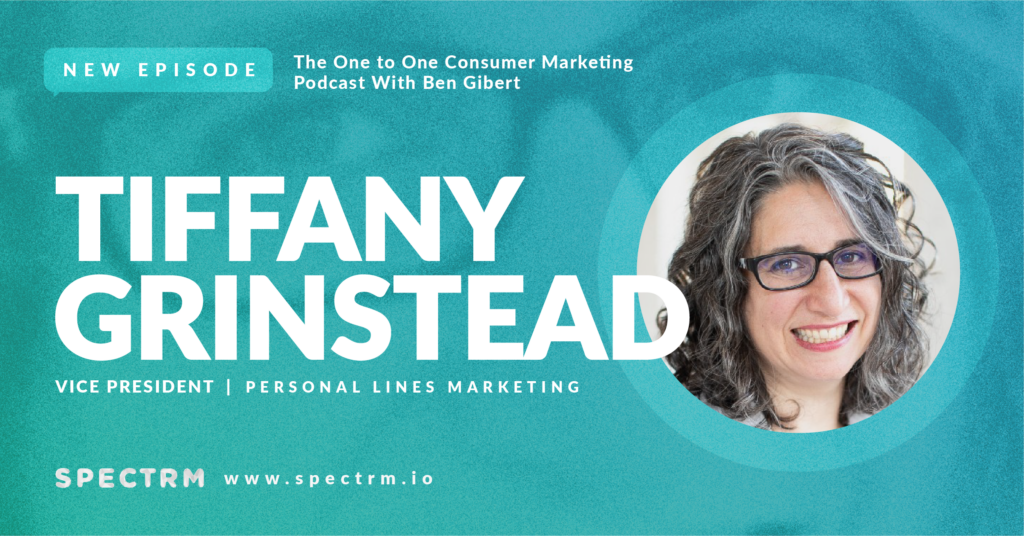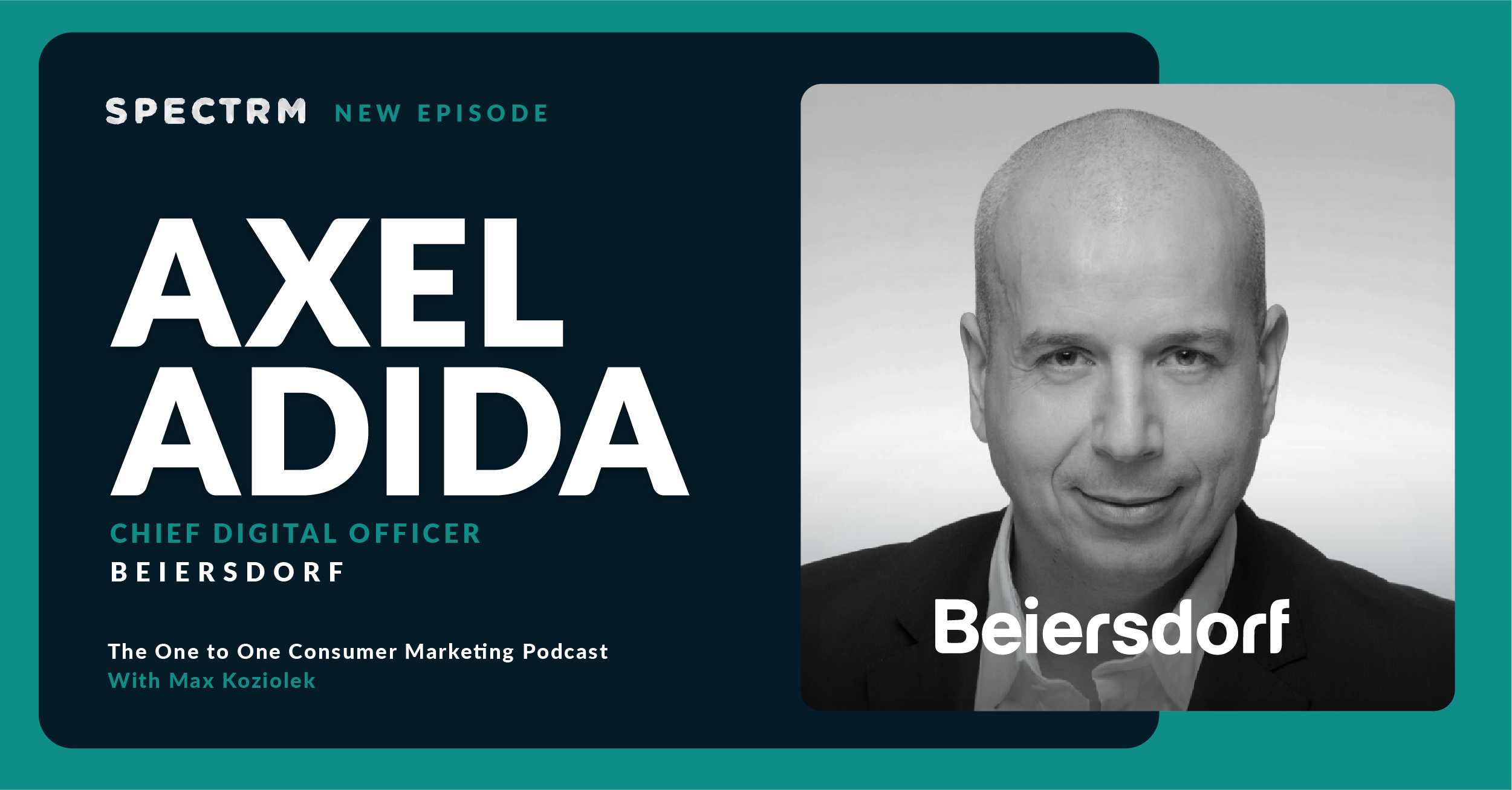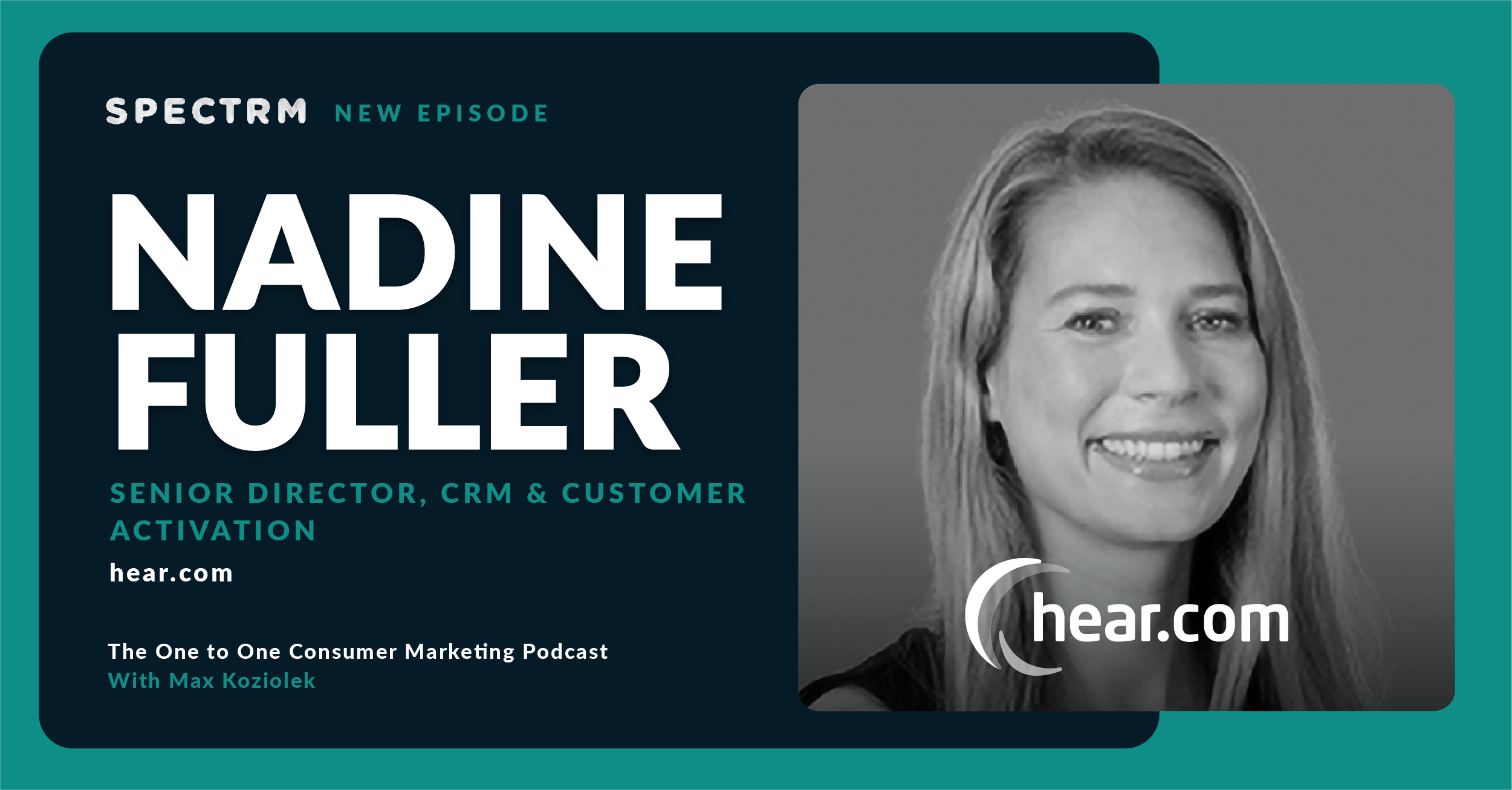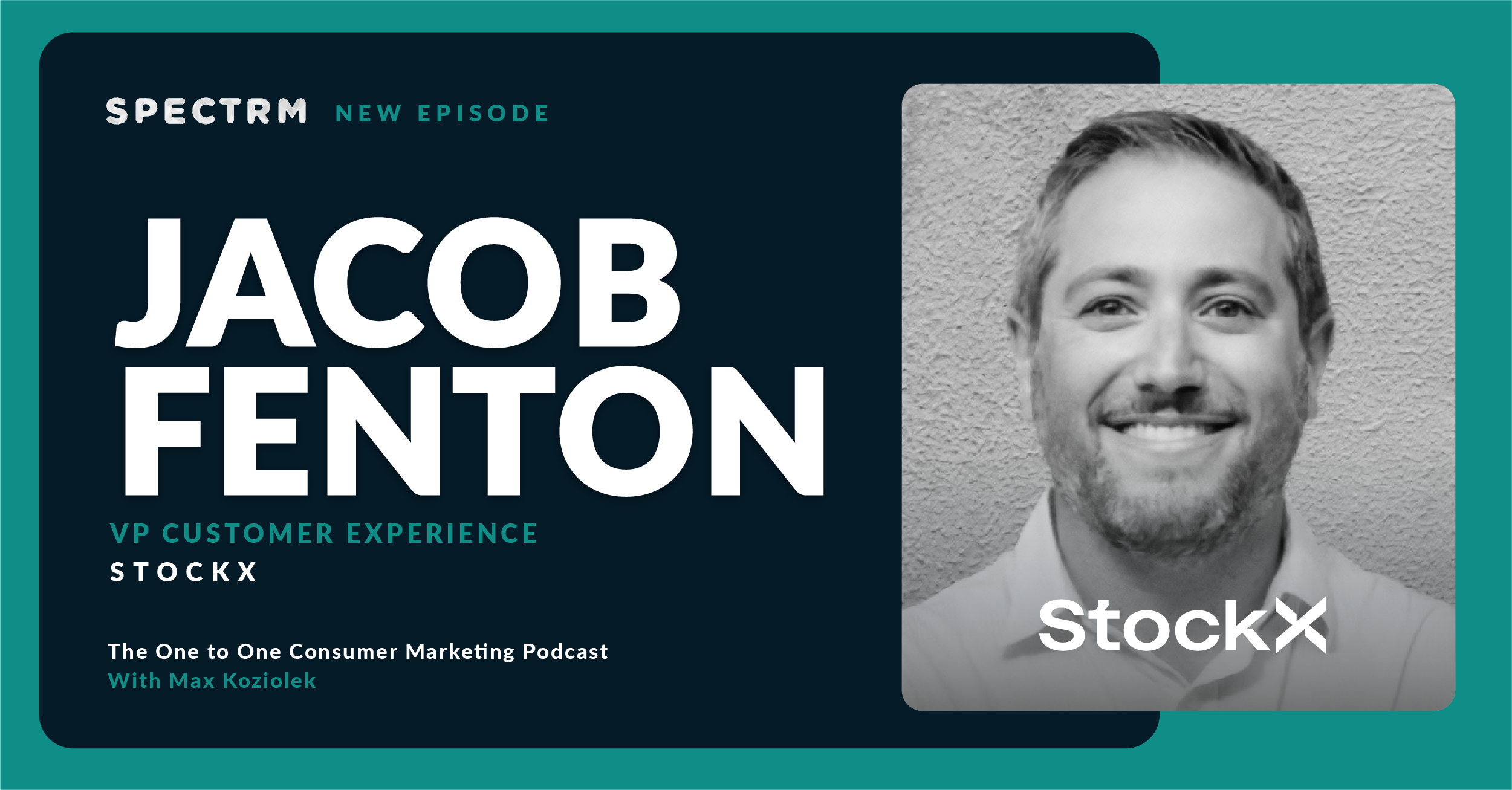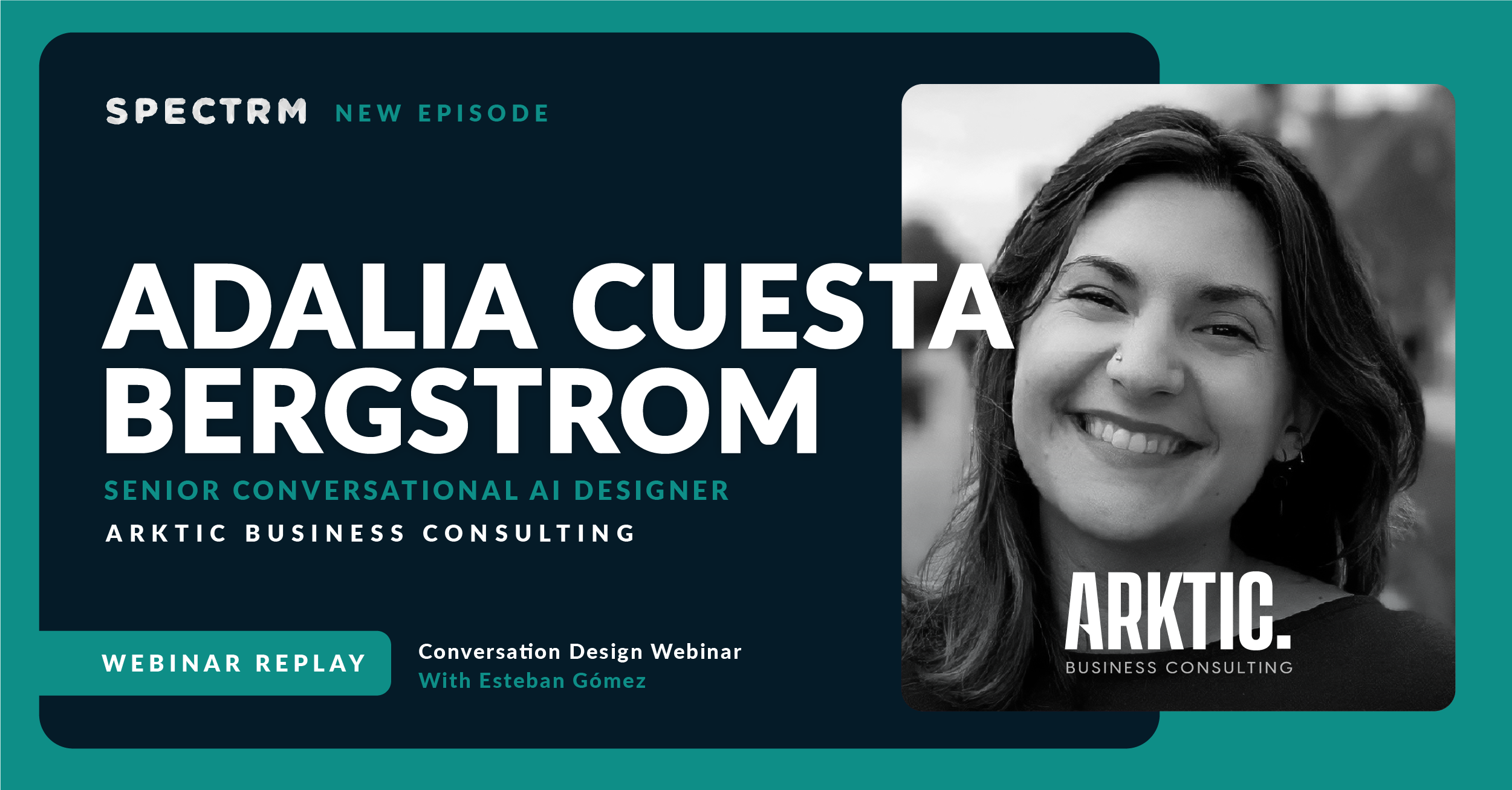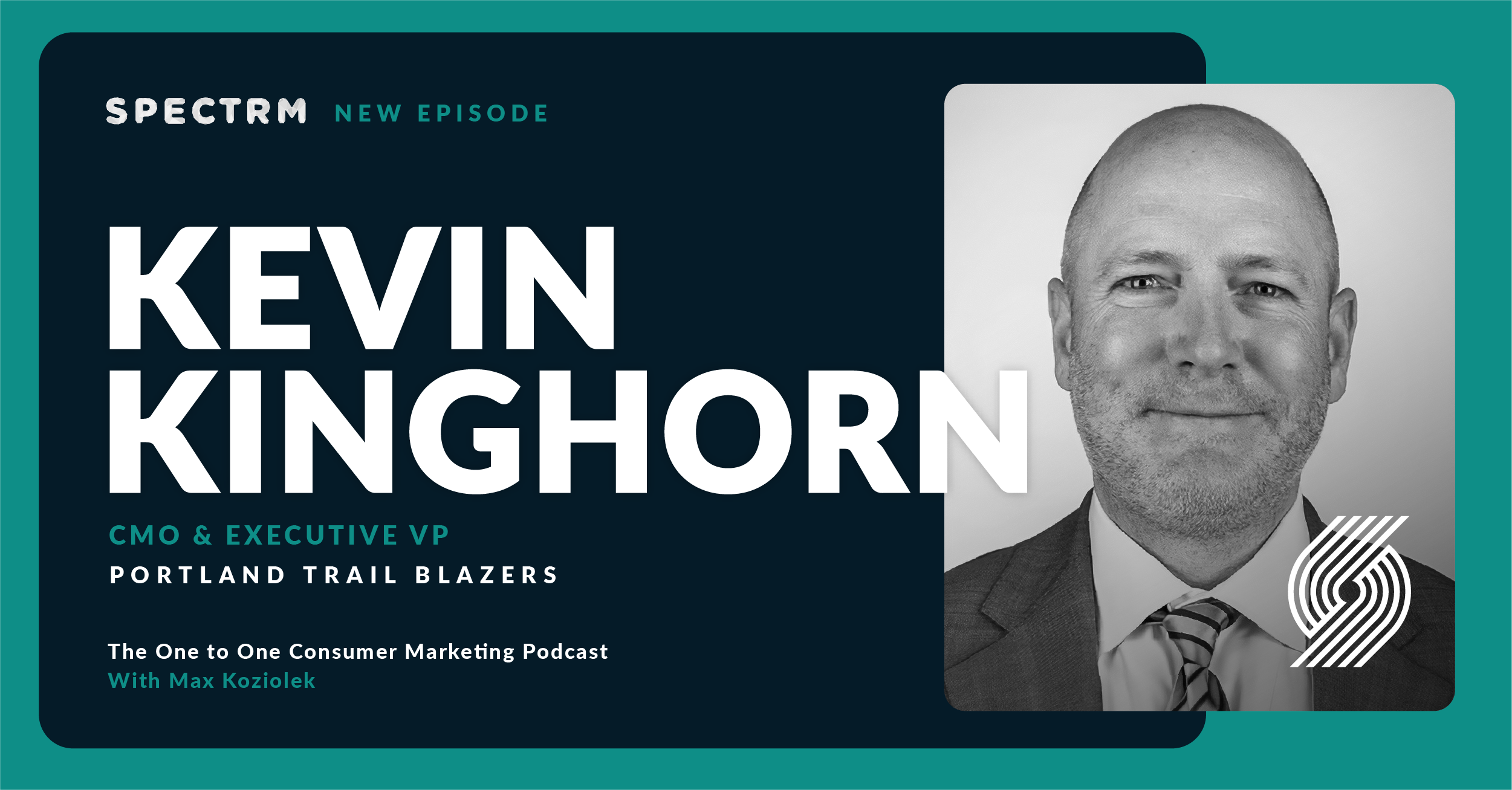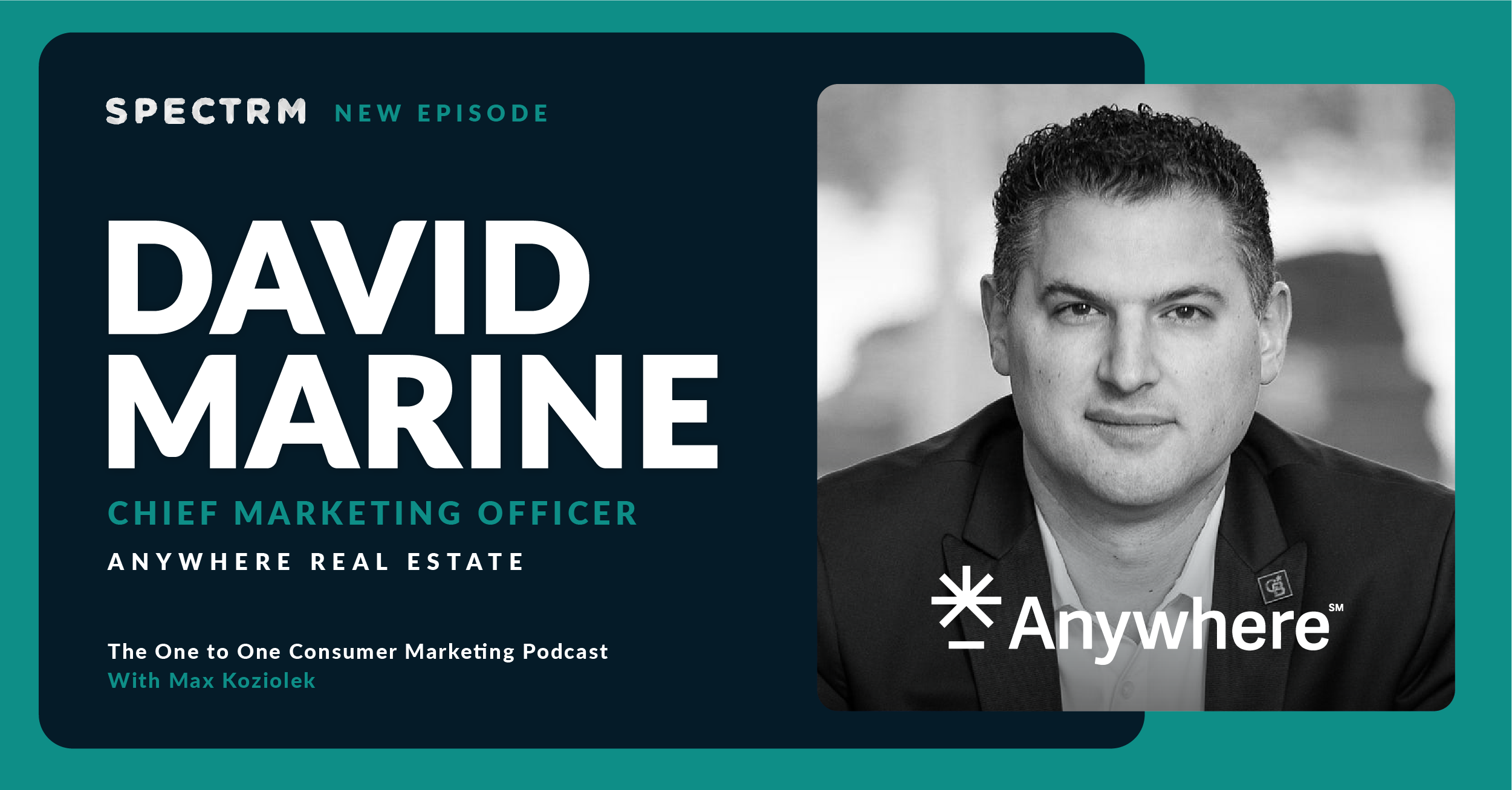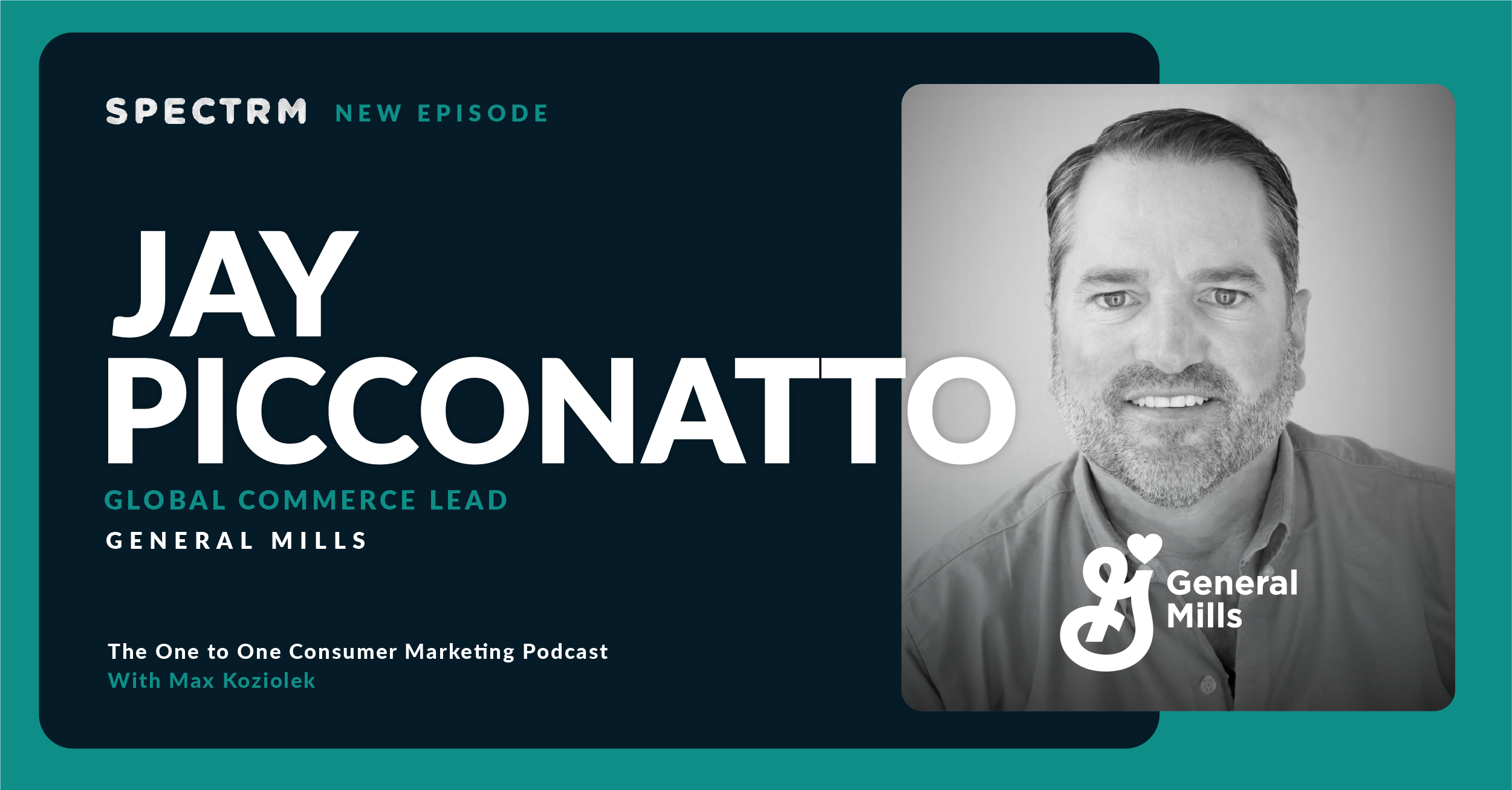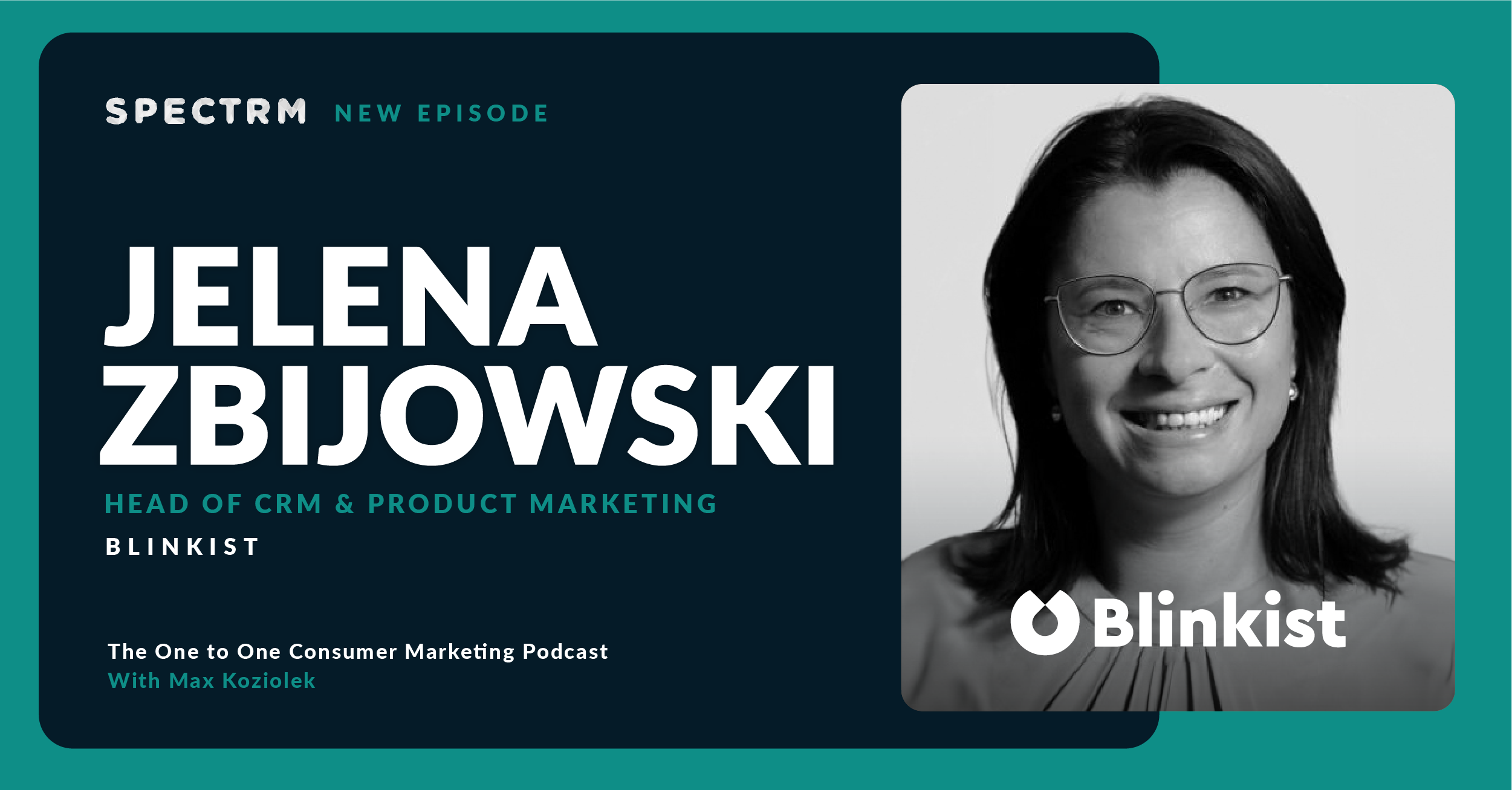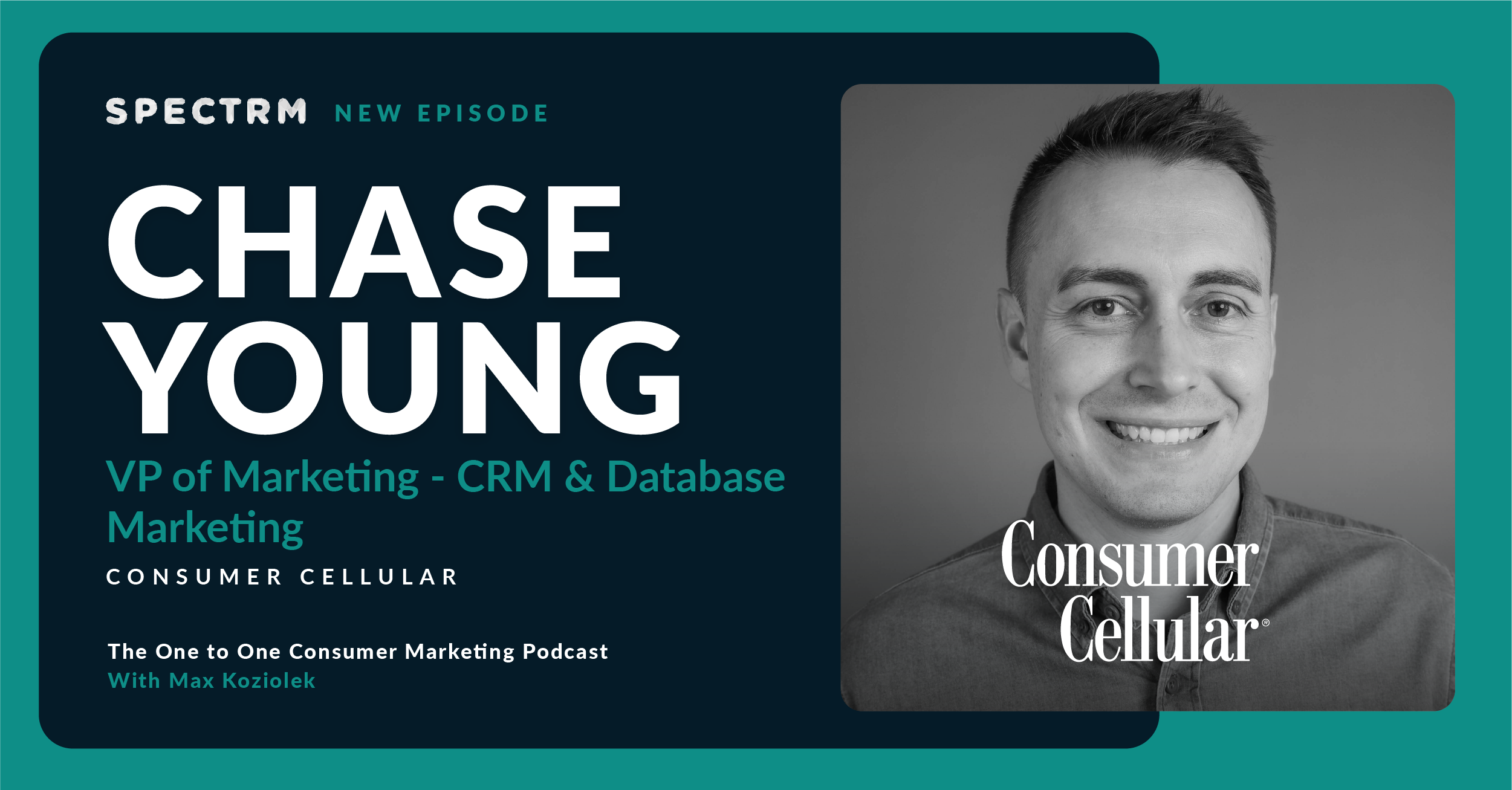Summary
In this episode, Ben speaks to Tiffany Grinstead, VP of Personal Lines Marketing at Nationwide. Together they discuss how Nationwide uses marketing channels to help customers through their claims or servicing journey, the importance of gathering and using data when providing personalization at scale, and actionable advice for marketers looking to improve their efforts.
Topics discussed
- How Nationwide meets people in the customer journey at different moments by focusing on segments and using data to drive their efforts.
- What tools Nationwide uses to manage their customer interactions, and why gathering and analyzing customer data is an integral part of the system.
- The challenges to personalization at scale, including data collection, technology integration, and cross-team collaboration.
- What channels are giving them the most success, including social media and social selling, and how they continue to make an impact with email.
- Why user-generated content is one of the most exciting trends happening in consumer marketing today.
- Three pieces of advice for those wanting to increase their consumer marketing impact — and why it’s key to have small wins to push you forward.
- What the future of marketing will look like, and how AI will change personalization and add value to the customer journey.
The first piece is to make sure you understand the journey. Personalization has to fit in your customer's journey, or the journey you want them to be having. So that's really where it has to start. The second piece to really think about is the data. Understand that the data journey is probably longer than you think it is, it's probably more complex than you think it is. And so you've got to have a really strong roadmap for that.
Guest biography

To win in this increasingly competitive world marketers must be willing to drive transformation that delights and creates shared results for customers and intermediaries.
I’ve built a reputation for turning around teams and strategic problem solving that gets results. As an experienced insurance and financial services marketing executive, I challenge my team to innovate, to cut through the clutter and to think beyond the obvious to deliver extraordinary care to customers, business partners and our company.
As a writer and passionate public school advocate outside of work, I’m able to harness the incredible power of storytelling to create commitment and action for both my company and my community.
Company overview
Nationwide, a Fortune 100 company based in Columbus, Ohio, is one of the largest and strongest diversified insurance and financial services organizations in the United States and is rated A+ by both A.M. Best and Standard & Poor’s. Nationwide provides a full range of insurance and financial services products including life insurance, public and private sector retirement plans, annuities, and mutual funds available through Nationwide Financial.
Industry: financial services | www.nationwidefinancial.com
Subscribe to the podcast newsletter
Transcript
00:00
Ben Gibert
Hey, everyone, and welcome to The One to One Consumer Marketing Podcast. Today I spoke to Tiffany Grinstead, who’s VP of Personal Lines Marketing at Nationwide and a Fortune 100 marketing executive. Really interesting talk with Tiffany that dove into how to orchestrate marketing to meet people in the customer journey at different moments. How to manage complexity when you’re running one to one personalization at a scale like Nationwide, which operates obviously across a number of different customer segments, business units, and areas all over the country. She talks about how her team structure enables her to focus strategy and messaging based on the customer segment and then how she draws on other functional corporate units to execute one to one personalization. I think really interesting to see how someone at her level and her experience is applying one to one marketing for someone like Nationwide. She also goes into ways that user generated content is changing the game and how AI will fundamentally reshape how marketing leaders add value and influence the customer journey.
01:05
Ben Gibert
So, highly recommend this one. I hope you get as much out of it as I do. Tiffany, I’m really excited to have you on the podcast. Thanks for chatting with me today.
01:14
Tiffany Grinstead
Oh, my goodness, thanks so much for having me.
01:17
Ben Gibert
Yeah, I’m excited to hear the first insurance marketer I’ve actually had on the podcast. And Nationwide is obviously huge. I’m really excited to see the kind of learnings you have to share and to tell us more about how you see the state of consumer marketing today. Before we get started, why don’t you tell us all more about yourself, kind of your background and some of the work that you’re doing at Nationwide.
01:39
Tiffany Grinstead
Absolutely. Thank you. Well, as you said, I lead marketing for our personal lines businesses here at Nationwide. That’s going to include any of our property casualty products that help protect consumers in their day to day lives. Home insurance, renters insurance, auto insurance, RV, boat, motorcycle, those kinds of protection products, cyber insurance for individuals called identity theft. So that sort of product line. Here at Nationwide, we are a member owned company in the sense that we’re mutual. Our mission and our vision as a company is really to provide extraordinary care to help people protect what matters most to them. Our personalized business really sits at the heart of that mission of really protecting not only the things that you have, but in many ways your family as you’re doing that protection. As we think about our marketing focus, that mission is always at the center of everything we do.
02:42
Tiffany Grinstead
We think about expanding the protection that we offer to more Americans through our direct to consumer efforts and through our business to business marketing through independent insurance agents across the country. Independent insurance agents are huge partners for us as well. We also will think about in our one to one marketing quite a lot our crip members, because we do feel such a critical mission to make sure that they’re protected in the ways that they need to be. That means we have a responsibility to help them interact with their insurance in ways that are helpful to their lives, whether they have a claim. We need to do one to one marketing to help them through the journey of getting the protection that they’ve paid for or we’re helping them through servicing. We’re just helping to provide extraordinary care during, let’s say, a catastrophe time when we need to help people in certain parts of the country protect their homes or themselves.
03:41
Ben Gibert
Yeah, thank you so much for that overview. I think that’s a great I mean, extraordinary care is something that I think when you’re touching on something like insurance in personal lens where it’s so close to people’s hearts and it’s so close to their lives, that I’m sure there’s a lot of attention that has to be paid on customer experience. I mean, you mentioned three almost types. You said direct to consumer kind of through agents as well, like reselling through agents and then your kind of, I guess, lifecycle marketing programs with existing customers. Can you walk us through how you think about those three different segments and the types of programs that you’re running for them?
04:20
Tiffany Grinstead
Just starting with our current members and working back from there with our current members, we’re focused on helping them to access the service in ways that have things right at their fingertips. No one wants to get pulled over and not have their proof of insurance. Oftentimes the moment when you need your proof of insurance is when you’re sitting there realizing like, oh wow, my proof of insurance officer, give me a second. Right? Really understanding where insurance gets used in people’s journey and then making sure that members can access that quickly and easily at those moments that matter, as I said before, whether it’s the claim or that need to have my proof of insurance or any other key pieces there, then the majority of our business these days is written through independent insurance agencies and we have tremendous partners all across the country. Through those partners, we focus on both B2B and what I would call B2C.
05:22
Tiffany Grinstead
So how are we helping? Independent insurance agencies have agencies that work better, that work more efficiently, that can help reach more clients, can provide the right kind of advice and protection and then also to put into their hands and sometimes to put into the customers hands for them with their permission and their interaction and connection into the personalized experiences. What the customers need to understand their coverages, to understand what they’re paying for and their rates at renewal, to be able to find the things that they need. That is us to the agent, to the consumer sometimes. We do also have direct to consumer capabilities, both online and phone capabilities from a channel perspective. In that space, we work really hard to find the right consumers who are going to be shopping in those channels because those are the channels that make the most sense for them from a diy protection perspective and to make sure that we’re meeting them in their journey, which often starts in the research space.
06:30
Tiffany Grinstead
It may start because they’re researching different insurance competitors. It may also start at the moment when they buy a home or a vehicle or a toy, as we like to call them, the rv, the motorcycle, the boat. Right? Finding ways to personalize their experience within their buying journey at those moments when they really need it for those folks that we know are going to be focused on that direct channel, that’s also part of what we do in our marketing.
07:00
Ben Gibert
Yeah. Thank you. That’s a great overview. I mean, you mentioned kind of one to one marketing personalized experiences for kind of each of those different audience segments. I’m sure that it gets pretty convoluted to manage that across the scale that we’re talking about with Nationwide and across those different segments. Can you give us some insight into the types of tools you use, the kind of programs you use to kind of meet people at the specific stage of their journey and ensure that kind of seamless experience with Nationwide technology?
07:30
Tiffany Grinstead
It’s just incredible, the enabler that it is for all of us, right? Whether we’re using Salesforce tools or Adobe tools, whether we’re connected from a CRM all the way through to a policy data, we’re pulling from a lot of different tools and systems. I think sometimes when we talk about personalization, we just want to jump right to the fun part, which is how do we start creating the right message to put in front of the right person at the right moment when data is such an integral part of that system, right? We all know, I think if we’re marketers, you hear the term cookie list future about every 10 seconds, right? It’s not here yet, but it’s looming. It’s looming. It’s more real every day, right? We’re all sorting through, what does that mean? We know that it means first party data. We know that it means zero party data, that data that people gladly give you in exchange for the personalization that they value and finding them in those moments where your first party data works, or you can get that zero party data in order to get them into that nurture them along.
08:43
Tiffany Grinstead
I think it’s a challenge across every audience, but it’s also a wonderful opportunity. I say the first thing that you have to do is really put your data lens on and understand not only what data do you have, what data do you need, but more importantly, what are the problems you’re trying to solve throughout the journeys? We do a lot of work from an innovation perspective, building out the consumer journeys with our UX team so that we clearly understand what’s happening at each point, what does the target audience want to do or need to do, or what do we need them to do? You start layering in, okay, what are the data points that could make that moment more impactful? You have to start doing that work of like, do I already have that data? Do I have to get that data? How do I map that data?
09:35
Tiffany Grinstead
You can quickly get lost if you don’t have a strategy and a plan and a really strong operations team that can kind of carry you through that.
09:45
Ben Gibert
Yeah, I think that’s such a good call out. You gain lost in the data so quickly, especially when you think about the amounts of data and the sources of data you can use. You mentioned Salesforce, like CRM, a couple of things. There is your framework that you think holistically with your UX team what is the customer journey look like? What’s the strategy? You think, what are the specific channels in which that engagement is happening and how can we activate data on that? Or can you talk me through like, the layers and how you approach that?
10:17
Tiffany Grinstead
Yes, and the truth of the matter is, it often starts in different places depending on the problem statement you’re trying to create. At the holistic level, what we strive for is to start by really understanding the customer journey. To your point with our UX team, whether we’re doing additional research on top of that, then even pulling our own data to help us understand what the customer journey is, because there’s what I tell you I want to do and then there’s what I do at critical moments. It is a confluence of the UX data, other sorts of insights that you have, both proprietary and those that you bring from outside, and actual data that you need to bring in order to figure out what that customer journey really is. What do you need it to be? Where are there gaps between the experience the customer wants to be having or that you need them to be having and the one that they’re currently having?
11:17
Tiffany Grinstead
How do you start to understand, how do I nurture you better, faster, more reasonably through that process? That can be at the consumer level where I think we all understand the buying funnel as marketers. Right. That journey from I’m vaguely aware that I need insurance, I’m more aware that I have to have it. I am aware that companies exist who could give it to me. Oh, Nationwide is one of those. I understand Nationwide’s unique value proposition. I want to get a price from them. I see the value for what they’re giving. I buy it. Right. That’s at the highest level, what consumers go through. There are so many nuances to I’m at the dealership, I’ve just purchased this car. What does that journey look like compared to I’ve just inherited my parents home, what am I going to do? I’m moving in, this is my first home, or whatever, right?
12:16
Tiffany Grinstead
It gets even more complex in the B2B space where you have an insurance agency, which is a business entity, and there’s someone leading that agency, there’s people selling within that agency, there’s people servicing within that agency. How much business that agency decides to do with one insurer versus another is influenced by all those different roles. They’re all influenced in different ways at different moments in their journey of helping sell to consumers and service to consumers. You have to understand how the whole system works and then start to understand where the connection points are in the system in order to really get to a personalization system that’s going to be sustainably at scale for you.
13:04
Ben Gibert
Yeah, the complexity in B2B gets crazy so quickly too, as you mentioned. Right. You already have this complex consumer journey that you have to meet them in different moments depending on different needs. When you introduce an agency level to that, you have to meet the agency at that moment. You have to meet every stakeholder at the agency at that moment. I think that’s such a big challenge. I think you’ve outlined some of the challenges and you mentioned the cookie list future and maybe some of the risks that are challenges that’s going to pose. Do you have other ones or do you want to dive in more into some of the challenges you’ve encountered, like when you try to implement this type of personalization at scale?
13:42
Tiffany Grinstead
Yeah, I mean, data connection is a huge challenge, right? I think if anybody had that perfected, they’d be the richest person in the world, right. We all get better and better at it with time. And there’s different technologies. I think another challenge is just there’s a lot of technologies and they all do different things. How do you kind of cobble those together to do the things that you need to do? That understanding of how you’re going to flow data through multiple different tools, that all maybe do something different, that all kind of need to connect together if you’re going to create the kind of experience that you want. I also think it varies from B2C2B, right. In both B2C and B2B, depending on your selling model, you need to integrate internally with other teams and in particular your sales teams.
14:35
Tiffany Grinstead
It’s criticality that marketing and sales are as one. In some cases, they truly are as one. We’re selling all the way through online, for example, we’re kind of driving that entire funnel and process through marketing touch points. When we’re really finding people who need advice and want to talk to someone on the phone, we have an integration with that sales representative that we have to kind of keep in mind and understand exactly how to make that person the most efficient resource we have and the most effective. Right. How does marketing not only just bring in leads and leave them at their doorstep, but nurture all the way through so that resource is as effective and efficient as it can be in the B2B space? It’s even more so. Right. You have limited sales resources in the B2B space. How do you create leads and opportunities at the exact right moment where the more expensive sales resource can kind of swoop in and clinch what needs to be clinched, but marketing can nurture in a low cost way absolutely everything else so that you can have kind of the most effective funnel possible.
15:46
Ben Gibert
Yeah, very different challenges in some ways, but using a lot of the same tools. Like you said, I think that’s a great framing of just making sure that sales resource is used as efficiently as possible. It sounds like you run a pretty close ship when it comes to marketing and sales. I know that’s always a challenge in B2B in terms of maybe you mentioned kind of your systems of record, you mentioned data a lot and how you use that in terms of systems of engagement. I guess that you layer on top of that or like the channels that you’re using to activate your different customer bases. Can you talk me through what you’re seeing work well and what you’re seeing not work so well? Maybe starting with the consumer side.
16:28
Tiffany Grinstead
Yes, on the consumer side, we have really leaned very heavily into down funnel digital channel in terms of how we’re personalized and reaching folks, whether that’s PPC, pay per click, pay per call kind of work integration back to our website, and different ways to treat them differently once we get them there. That has really been effective for us with consumers in a big way. I think that the social media space is taking off and the concept of social selling and how you can start to integrate the in app consumer experience back through to a sale because there’s so much rich data within the social media experience. Right. That’s something that we’ve been paying attention to in the consumer space. Obviously, email and email continues to be a really important channel. I would say in the B2B space, email is still basically king. We use all the different channels that we possibly can.
17:34
Tiffany Grinstead
We’re following you around with ads or using social media or doing all of those things. Truly you can quantify in a big way what email can do, especially if the email is hyper personalized and arrives in the moment when I need it from the person that I expect it to arrive from in the way that I most expect that I can interact with it. We’ve definitely seen that continue on the B2B side to just pay dividends. We’ve had some really unique programs where we’ve understood that something’s happening in the quoting process and been able to use emails at just the right moment to have that independent agent change their behavior in the quoting process. And we’ve seen significant results from it. Our rate of seeing that thing that’s happening in the quoting process go a positive direction for us went up 68% based on one nurture path that we trigger when we see that behavior.
18:35
Tiffany Grinstead
That’s a series of emails. Email can be still very powerful within the B2B channel. I think it makes sense because a lot of times when you’re at work, your email is part of the work. You’re less excited maybe at work about getting text messages for work, what I mean? I think in the consumer space you can use text messages, you can do more of that kind of work. In B2B, especially now, there’s a little more of a line.
19:03
Ben Gibert
Yeah, I think there’s no doubt that as much as people love to proclaim, email is dead. In B2B, it’s still very much a high performance channel. Also in consumer, I think it’s being declared dead in ways just because we see like SMS and messaging becoming such powerful conversion channels versus email and just because so much consumer attention is there versus email. You mentioned some of the triggers that you’re using, you mentioned a pretty substantial conversion list in just one particular nurture flow and how you implemented that. Does it maybe point even though that’s happening in email, are you kind of implementing similar programs in other spaces? Can you maybe talk what’s the key metric that you’re always looking at there? In email is thinking like open rates, click through rates, but it sounds like you’re thinking much more thoroughly in terms of purchase, lift, that thing.
19:56
Ben Gibert
Can you talk me through what types of KPIs you tend to look at?
20:00
Tiffany Grinstead
Yes, in the B2B space, we’ll look at the leads we deliver to the sales teams, the close ratio and then what happened with those leads. We also holistically look at the treated folks against control for lift in sales. We’ll call that a marketing influence. We use direct written premium so that’s the equivalent of sales or policies in force. We’re looking at are we directly hitting the outcome that we ultimately want, which is coming in terms of sales, but we’ll also look at sub goals that we might have along the way. For example, you could have a nurture path in our space that’s just about making sure that people are using all the discounts that are available. We’ll look at the discount utilization rate, or we might look at adoption. One of the big things in auto insurance, you probably know this is something called telematics, which is really being rewarded for driving well.
21:00
Tiffany Grinstead
I will let you track my driving and then as a result of how I drive, I can get a discount. Just by participating in the program, you get a discount. How well you drive, your discount can go up. Right. A lot of nurture path work, which is kind of what we call our personalization work for consumers and for independent agents, sometimes looks at the utilization of those programs. Right. Are we getting a higher utilization of folks participating in that program?
21:31
Ben Gibert
Yeah, that makes a lot of sense. I mean, when I hear the programs, you’re talking about the number of products, you’re talking about the segments of audiences, you’re talking about the amount of complexity at a small B2B startup. It’s like the scale there is hard to imagine. Can you walk me through what your team structure looks like? How do you actually coordinate those kinds of activities at a company the size of Nationwide?
21:56
Tiffany Grinstead
Well, one thing that’s incredibly wonderful is we have a number of business lines that are part of Nationwide. We have a very robust financial services company. We have a commercial lines team. We have E&S insurance. We’re the number one leader of pet insurance in America. Each of those business line teams, we are lucky enough to have access to a central team that has some content and delivery. That team has expertise in doing nothing but media buying, or nothing but social media, or a marketing operations team that literally does nothing but make sure that we have the right martech. My personal lines team is able to pull on those resources to bring in for personal lines without having to have expertise in every one of those areas. And so my team is structured. We have a team that focuses on independent agencies marketing. We have a team that focuses on direct consumer and member marketing, one that’s very centered on product, and then one that really focuses on claims and self service capabilities.
23:07
Tiffany Grinstead
That’s kind of how we go to market. We have the expertise on our team. We have the role of being embedded with our business, creating strategies driving all of our personalization strategies, but we are able to pull on teams that literally all day long are just in salesforce doing journey building. We’re designing a journey inside of salesforce, our marketing ops partners are saying, I built 18 of those this week, and here’s what worked and didn’t work, and we’re able to optimize with them.
23:37
Ben Gibert
Yeah, that’s an incredible resource to have. I’m envious just thinking, but I guess a lot of sense. If I’m hearing right, you have the structure of the different business units, like you said, then you have the teams within your team that split out across the different segments that you’re serving, essentially. It sounds like a lot of the strategy messaging comes from your team. On the execution side, you have these incredible resources that are doing it at scale across all the other business units and therefore can kind of share tech, can share all the learning and the data that goes into that too. Yeah, you’re sitting on a treasure trove of data, I’m sure, when it comes to all of that execution. I mean, maybe taking a step back and looking at the market also just outside of Nationwide, I mean, what for you are some of the most exciting consumer marketing trends or shifts that you’re seeing right now.
24:27
Tiffany Grinstead
I think user generated content and the creator economy is something that I am really interested in right now as we think about the move toward authenticity and almost away from the heavily produced. Right. You’re seeing brands do things like run national ads that were created and generated by individual users, that is, through social media and that can take the place of that was the big buzzword a year or two ago, right? It’s moving so fast. Find an influencer, hire the influencer. Now I think this concept of shifting to creators and thinking about how users are generating content on behalf of brands that in the past, they think would be like, oh, that doesn’t seem good for the brand. Now you’re starting to say that actually can be some of the most powerful content when someone thought they’re going to create their own content. Right. How do you create that kind of passion and then how do you amass that passion for greater good of the brand and then at the same time have all those brand controls and all those things that you need?
25:39
Tiffany Grinstead
I think that’s a really fascinating thing that’s playing out in real time right now.
25:44
Ben Gibert
Yeah. The balance between control of the brand and authenticity and the ability to have people create that content that is so authentic and resonates with people is definitely something different. Brands have very different approaches to as far as how much they want to control that. I imagine in the insurance space in particular, there’s probably some tighter controls than in other places too, as far as how you market and the types of people that you want to be representing.
26:12
Tiffany Grinstead
Nationwide, even our company has put a toe into it with some work that was done by our brand team around our jingle. Nationwide is on your side and inviting folks to sing the jingle and share that with us. There are angles in, I think, for lots of different kinds of brands.
26:32
Ben Gibert
Yeah, that makes sense. Almost like finding not necessarily control, but finding ways to guide that process that isn’t just about letting anyone run free and then putting that on a commercial nationwide. I mean, you clearly have a lot of experience in kind of executing personalization efforts at a scale that is massive. What would be your top three pieces of advice for other marketers that are also looking to kind of further scale and improve their personalization efforts?
27:01
Tiffany Grinstead
Some of these may seem elementary, but, the first piece really is make sure you understand the journey. So, personalization has to fit in your customer’s journey or the journey you want them to be having. That’s really where it has to start. I think the second piece to really think about is the data, right? Understand that the data journey is probably longer than you think it is. It’s probably more complex than you think it is. You’ve got to have a really strong roadmap for that. You have to really understand and because you have to work across so many different functions, especially in big companies, to align the data and you have to have legal there, you have to have it there. You need to have oftentimes your operations teams. You have to have a clear strategy for how you’re going to identify through the journey what it is you need to personalize and then create a roadmap to make the data work.
28:00
Tiffany Grinstead
I think my third piece of advice is you really need incremental wins. This is an area where oftentimes people can’t see it till they see it. You really have to design incremental wins. You can’t just jump all the way to scale. You have to be able to have those incremental wins. I’ve shared many pieces of our path. I was on a roundtable with some folks who are from, I think, the entertainment and restaurant industry, and they talked about just picking one resort and being able to show that when I can ping the phone, and I can tell that somebody’s walking past the steakhouse, whose past behaviors have shown me that they’ll spend money in the steakhouse, that I understand a motivator for them is pricing, that I can put a coupon on their phone because I know they’re in proximity to that steakhouse. I know this is about the time of day that they eat and I know that they’re going to be motivated by.
28:56
Tiffany Grinstead
That coupon, right? Maybe I can’t do that across the entire nation in every resort we own. It’s actually okay to kind of start that scaling bit by bit and to do that in one resort before you kind of move on and on. That’s just something that I think is important to keep in mind.
29:15
Ben Gibert
Yeah, I think those are all great pieces of advice and something like you said, starting simple, the simplest things are always the most valuable, right? And the fundamentals are the most important. Focusing, really focusing and understanding your customer journey, like, digging into the data and understanding how to map your strategy onto the data that you have available, and focusing on incremental wins as a way to get started and to really prove the roi, I think, are things that every marketer should be taking away as a key learning there. Yeah. Thank you so much for sharing that. I mean, as we wrap up, it’s a tough one. I always like to ask people this because no one likes to predict the future, because we could all be wrong. Five years from now, what do you feel like the future of one to one marketing looks like?
29:58
Tiffany Grinstead
I think it’s a super timely question. Everybody’s a buzz, including my personal trainer this morning with the new chat bot AI that’s out, right? I do think that AI is going to substantially change the whole personalized marketing front. I don’t know if it’s going to be five years or ten, but there’s definitely a moment coming when the AI is going to segment and the AI is going to grab the data and the AI is going to assess journey. The AI is going to take a million people and give a million people a slightly different experience based on what it knows about them, and then measure that in real time, optimize that in real time, and report that in real time. I think that’s going to play out in ways that are very interesting. We’re going to have to answer questions like, if I let the AI just run that, what will be the risk to my brand?
30:56
Tiffany Grinstead
If the AI we’ve seen that right, runs off and starts doing things in really bizarre ways, if someone belongs to a prominent hate group and the AI finds out that’s the best way to sell insurance, we don’t want that. Right? I think it’s going to set up a whole new set of challenges and a whole new set of parameters that we’re going to have to think through as marketers of the roles we play are going to be different because the AI is going to do some things we did. The oversight of the AI, the connection of the AI to the brand, who sets the parameters that the AI runs with, who makes sure that they’re not taking those into strange places like my prior example. This is all going to play out as we’re getting more into virtual reality and metaverse and a million different metaverse experiences that AI can create.
31:47
Tiffany Grinstead
Whether that’s five years or ten or maybe 20, I don’t think we’re that far away from having to rethink what our roles are as marketers in light of the roles that AI plays.
31:59
Ben Gibert
Yeah, I think very well said, being in the natural language and AI kind of chatbot space. Obviously, the hype around GPT is something that I hear everywhere these days. But you’re absolutely right. It’s like understanding how you use the power of those types of systems while still recognizing that you need to do a lot of work on the editorial kind of oversight side of maintaining what is your brand like? Really? Understanding, taking care in the way that if you enable it to talk to customers like, what are the parameters, like you said that you use to guide all of that. I think it’s going to be incredibly interesting over the next five to ten years. I think ChatGPT is a perfect example where this technology has been around in the various niches, but it took one viral example for it to become really at the forefront of how people are thinking about all of this right now.
32:51
Ben Gibert
It’s going to be an exciting few years ahead. Hopefully we’ll still have jobs in five years, you and I. I just think.
32:58
Tiffany Grinstead
They’re going to be different, and we’re going to have to adapt with that.
33:02
Ben Gibert
I agree. I think we need to move beyond just kind of creators of repetitious content to curators, to providing unique and original insights, and to really helping to guide the systems that are going to help guide our customers. Tiffany, thank you so much for coming on the podcast today. It’s been really been a pleasure learning about what you’re doing at Nationwide and your experience before we wrap up today. If anybody that’s listening wants to follow your journey, where should they go?
33:30
Tiffany Grinstead
Definitely come and follow me on LinkedIn. Tiffany Grinstead on LinkedIn. I definitely share a lot of marketing insights and other key insights along the way.
33:41
Ben Gibert
Yeah, absolutely. I will do that myself right after this podcast if I haven’t connected with you already. Tiffany, thank you so much for everybody else listening. If you want to learn more about Spectrm and what we do, go to Spectrm.io or check us out on LinkedIn. Tiffany, thank you so much.
33:57
Tiffany Grinstead
Thank you.
